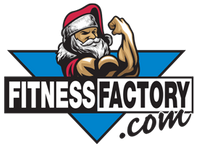
Plyo Boxes & Steps
Build Explosive Strength and Tone Key Muscles with Plyo Boxes!
Plyo boxes are not only used for box jumps, they can also help you sculpt your quads, hamstrings, glutes, and core through explosive exercises such as depth jumps, lateral hops, and box dips. Training with plyo boxes and steps is an excellent way to enhance your workouts and reach your fitness goals, no matter your experience level.
Plyo training unlocks your hidden power, improving strength, agility, and stamina. Whether you're a seasoned competitor or new to fitness, plyo box exercises will help you target and tone key muscle groups and boost your explosive power.
Get ready to take your training to the next level!
Do you have questions about plyo boxes and steps? Let us help!
What are the different types of plyo boxes?
Three main types of plyo boxes are steel frame, wood, and soft. Each type has advantages and disadvantages, so your best choice will depend on your needs and preferences.
- Durable platforms for explosive jumps and strength training
- Made with sturdy steel frames for maximum stability and weight capacity
- Often coated with a non-slip surface for safe landings
- Versatile fitness tools for jumping exercises and strength training.
- Made from sturdy wood construction, offering stability and support.
- Often, they come in multiple heights to adjust difficulty and target different muscle groups.
- Typically made of foam or rubber.
- Easier on your joints than hard plyo boxes, good for beginners or people with injuries.
- Less stable than hard plyo boxes, may not be as effective for developing power and explosiveness.
What should you consider when purchasing a plyo box?
Here are some additional factors to consider when choosing a plyo box:
- Grip: Make sure the box has a non-slip surface to prevent you from slipping and falling.
- Weight: Choose a box that is heavy enough to be stable, but not so heavy that it is difficult to move.
- Price: Plyo boxes can range in price from around $85 to $250.
Are plyo boxes safe to use?
Plyo boxes, like any exercise equipment, can be safe when used correctly but also carry some risks if not used cautiously.
Here's a breakdown of their safety aspects:
Safe aspects:
- Effective and versatile: Plyo boxes are popular for good reason. They offer effective plyometric training, improving power, explosiveness, and agility.
- Reduced impact compared to jumping on hard surfaces: Compared to jumping on the ground, plyo boxes absorb some impact, especially if you choose foam or soft wood options. This can help reduce stress on your joints and minimize the risk of certain injuries.
- Variety of options for safety: You can choose from different materials (foam, wood, etc.), sizes, and even adjustable heights to cater to your individual needs and comfort level. For beginners, softer materials and lower heights offer additional safety.
Potential risks:
- Injuries due to falls: Falling off the box is the most common risk, potentially leading to sprains, strains, or even more serious injuries like fractures. Proper form, controlled movements, and using the right height for your skill level are crucial to prevent falls.
- Joint stress: Jumping exercises can be demanding on your joints, especially if you have existing conditions or improper form. Listen to your body, take breaks, and use proper landing techniques to minimize joint stress.
- Improper use: Misusing the box, like trying overly ambitious jumps or neglecting proper form, can significantly increase the risk of injuries. Always stick to exercises within your capabilities and follow expert instruction if needed.
Overall, plyo boxes can be safe and beneficial when used responsibly.
Can you combine plyo box exercises with other workouts?
What exercises can you do with a plyo box?
You can do many exercises with a plyo box, catering to different fitness levels and targeting various muscle groups.
Here are some ideas to get you started:
Lower Body:
- Box jumps: The classic! Jump onto the box with both feet, focusing on explosive power and soft landings.
- Step-ups: Step onto the box with one leg, then bring the other leg up. Alternate legs and focus on good form with a straight back and engaged core.
- Depth jumps: Stand on the box and jump down, landing softly and immediately jumping back up onto the box.
- Lateral box jumps: Jump from side to side over the box, working on agility and coordination.
- Split squats: Place one foot behind the box and the other in front, then lower yourself into a squat position.
Upper Body:
- Box dips: Place your hands on the edge of the box and lower yourself down, keeping your elbows close to your body.
- Plyo push-ups: Start in a push-up position with your hands on the box. Lower yourself down, then explosively push your hands off the box to propel yourself into the air.
- Pike push-ups: Place your hands on the box and your feet shoulder-width apart. Lower your chest towards the box, keeping your body in a straight line.
Full Body:
- Burpees with box jumps: Do a regular burpee, then add a jump onto the box at the end.
- Mountain climbers: Place your hands on the box and your feet in a plank position. Alternate bringing each knee towards your chest in a running motion.
- Box plank variations: Try different plank variations on the box, such as high plank, low plank, side plank, or alternating leg plank.
For more exercises you can perform on a plyo box, watch the video below:
